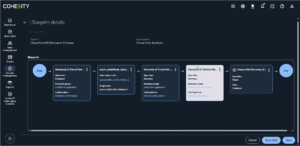
Cohesity this week previewed an artificial intelligence (AI) agent that has been specifically trained to accelerate the rate at which data can be recovered in the event of an outage or ransomware attack.
Chris Hoff, senior product marketing manager for Cohesity, said Cohesity RecoveryAgent generates a set of customizable blueprints that enables IT organizations to recover data in the right order. That approach ensures disruptions are kept to minimum, especially given the number of dependencies that are likely to exist between various data sets, he added.
Scheduled to be available in the second half of this year, the Cohesity RecoveryAgent, enables IT teams to easily build recovery plans that can be automatically integrated into incident recovery workflows using a script that, for example, might automatically scan data for vulnerabilities before data is reinstalled.
It is designed to be compatible with both Cohesity NetBackup, originally developed by Veritas which Cohesity acquired late last year, and DataProtect platforms that can be used to recover data originally stored in the cloud or an on-premises IT environment.
The blueprints being provided can play a crucial role when organizations are attempting to recover from a ransomware attack, noted Hoff. Cybercriminal syndicates have become much more adept at determining the amount of ransom they demand based on how long it might otherwise take for an organization to recover, he added. The longer that might take, the larger the amount of cryptocurrency that might be demanded becomes.
Additionally, IT teams can also use those blueprints to rehearse recoveries to prove the blueprint will effectively recover their data in a non-production environment. Knowing the organization has ability to recover data can be crucial because it makes it possible to confidently refuse to pay the ransom at all or, at the very least, reduce the size of the potential payment that might need to be made in the name of expediency.
The degree to which IT organizations have integrated backup and recovery tools into a cyber resilience strategy can vary widely. However, more organizations than ever now rely on various data protection tools to at least aid in recovery from a ransomware attack, if not outright thwart them. The challenge is the level of collaboration that needs to occur between IT operations and cybersecurity teams to achieve that latter goal, can be difficult to attain and maintain.
Hopefully, as advances in AI continue to make it simpler to manage IT operations, the divide that currently exists between these teams will be bridged. There will always be some need for separation to ensure cybersecurity policies are followed but in moments of crisis, there is a clear need for both teams to be able to work hand-in-glove.
In the meantime, IT teams would be well advised to regularly test backup and recovery processes to ensure that the pristine copies of data they need to recover are both actually accessible and recoverable. Because waiting to determine that after a security incident has occurred is by definition going to be much too late.


